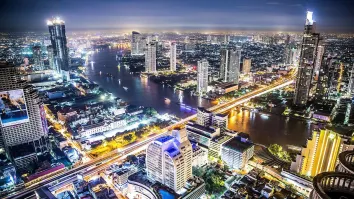Riding the waves of opportunities: Asia to spur infrastructure growth
By Neil ParekhUrbanisation, together with population growth, is expected to add another 2.5 billion people to urban areas around the world by 2050, according to a United Nations report launched earlier this year. The potential challenges this will bring will be far-reaching, particularly in Asia and Africa where nearly 90 percent of the increase is set to take place.
It will be vital for strong infrastructure investment in order to respond to things like congestion and housing demand. Such investment will not only bring economic returns, but also provide long-term social benefits. We see three key opportunities for Asia to lead and ease global infrastructure investment shortages.
As the Asian region grows, investment in outdated infrastructure is needed to ensure the economies grow sustainably. A higher demand on transport infrastructure for a more mobilized workforce, better capacity in the provision of water and electricity, as well as quality education and healthcare facilities, are some of the reasons why Asia is set to become the infrastructure hub of the world.
The Asian Development Bank has estimated that ‘Developing Asia’ will need to invest approximately $1.7t per year in infrastructure to support the growth momentum. At the same time, Asia is also riding the wave of opportunity that has risen with sustainability demand and technology advancements.
Research shows there have already been 1,400 renewable energy infrastructure deals in the region since 2008, and clean energy investment is expected to account for 44 percent of the global power capacity spending over the next decade. The Asian region represents nearly half of this investment.
The growing need
The region’s infrastructure need is more urgent than ever. The good news, however, is that Asian countries are gearing up to launch high quality infrastructure to stimulate growth and to build a strong base for the future.
Singapore, for example, is increasingly seen as the premier infrastructure hub. There are plenty of ambitious projects in the pipeline, including the new terminals at Changi Airport, a ‘mega’ terminal at the Port of Singapore, and the MRT upgrade. The country is well-positioned to leverage its strong ecosystem of developers and supporting institutions, to set a benchmark in Asia, and to lead expertise sharing across the whole region.
Banks in the region can in turn play a key role in deepening relationships with various parties—including sponsors, contractors, institutional investors and infrastructure funds —to facilitate new projects.
Historically, and increasingly, government budgets have been constrained, posing challenges to infrastructure investment around the world. However, as investors’ appetite increase in the region, we see increasing opportunities to leverage public-private partnerships.
As of September 2017, the total Asia-focused unlisted infrastructure assets under management is $57b, accounting for 13 percent of global assets under management. The backdrop of funds raising in Asia remains positive, but countries should look into how overseas jurisdictions have successfully encouraged private investment in infrastructure.
For example, in Australia, pension assets will soon exceed those of the banking sector within the portfolios of superannuation funds. At the same time, we have also seen public-private partnership policies and asset recycling actively pursued by the Federal and State governments to actively increase incentives. In a recent Preqin report, unlisted infrastructure managers cite regulation as one of the top 3 challenges they face investing, so there is clearly more we can do to increase incentives and close the gap in Asia.
Open opportunities
We see significant potential for Asia when it comes to infrastructure investment. It is the area with the greatest need, and also a region that is well-equipped with the right expertise.
To make the region a more compelling environment for investors, regulatory and institutional challenges need to be addressed. This will be critical to spurring investment and facilitating mutually beneficial partnerships between the public and private sectors.
There are real opportunities in Asia for banks to connect infrastructure businesses with investors, which can be through accelerating activities in global infrastructure and providing a way for private capital to contribute more broadly.




















 Advertise
Advertise








